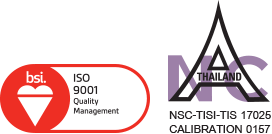STACK 990 Emission Monitor
Product Descriptions
The PCME STACK 990 is an approved particulate Continuous Emission Monitor suited to industrial applications in stacks after bag filters, cartridge filters, cyclones and process driers. The instrument combines regulatory approvals (TUV BlmSchV 17 and 13) for both dust measurement and leak monitoring, with reliable automatic quality assurance features, rugged operation and advanced diagnostics for the management and optimisation of arrestment plant.
Options include Ex Gas Zone 2 and Dust Zones 20, 21 and 22, up to 800°C stack temperature operation and Hastelloy® enhanced corrosion protection; The PCME STACK 990 is used extensively for particulate measurement (mg/m3) and bagfilter leak location across a broad range of challenging applications.
The PCME STACK 990 features comprehensive automatic self checks to ensure regulatory compliance and to provide plant operators with pre-emptive warning of potential sensor issues to allow preventative maintenance scheduling, lower process down times and confidence of data integrity:
– Automated Zero and Span drift checks to enable a simplified process for operators to meet regulatory standards
– Patented probe rod contamination check, measures and reports condition of probe-to-stack insulation ring for maintenance scheduling, before short circuit can occur
– Probe rod short circuit check enables operator to know when the sensing rod may be electrically shorted to the stack and avoid associated errors
The PCME STACK 990 is suitable for:
– Stacks after bag filters, cartridge filters, cyclones
– Constant or variable velocities within range 8-20m/s (typical bagfilter velocity ranges), constant velocity required outside this range
– After process driersNon-condensing / dry flue gases*
– Explosive atmosphere zones 2, 20, 21 and 22
– Not suitable for electrostatic precipitators or applications with water droplets*
* For wet / condensing flue gas applications see PCME STACK 181 WS
Typical Applications
The PCME STACK 990 is used to monitor emissions from the following types of processes:
– Quarrying (eg Rotary Dryers, Roller Mills)
– Carbon Black filter plant
– HEPA filters (eg pharmaceutical / biomedical plant)Coal Mill / Cement Mill / – Cement Kiln arrestment plant
– Humid application eg Dryers, Calcinators
– Wood cutting & chipping plant











































































